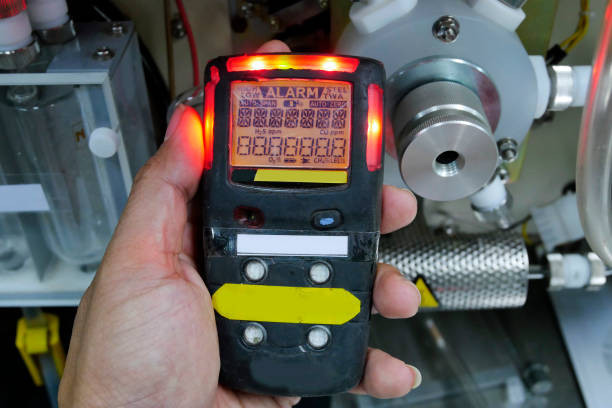15
views
views
This article explores the hidden disadvantages of the gas leak detector market, including high costs, maintenance complexity, false alarms, skill gaps, and environmental challenges limiting broader adoption.



The gas leak detector market has witnessed steady growth over the past decade due to rising safety regulations, industrial automation, and increasing awareness about hazardous gas emissions. However, beneath the surface of this expanding market lie several challenges that hinder its widespread adoption and overall market performance. These disadvantages, though not always in the spotlight, affect manufacturers, end-users, and regulators alike. Understanding these pitfalls is crucial for stakeholders aiming to improve the market landscape.

One of the key disadvantages in the gas leak detector market is the high initial investment required for quality equipment. Advanced detection systems that can sense multiple gases with high precision come at a steep price. This cost includes not just the hardware, but also installation, calibration tools, and periodic maintenance. For small and medium enterprises, especially in developing regions, these upfront expenses can be a major deterrent, resulting in either delay in adoption or reliance on cheaper, less reliable alternatives.
Maintaining the accuracy of a gas leak detector is not a one-time task. These devices require periodic calibration to ensure optimal functioning. However, calibration is often a technical and time-consuming process, requiring trained personnel and standardized calibration gases. A miscalibrated sensor can produce false alarms or fail to detect a leak, both of which are dangerous and costly. The complexity of maintenance not only adds to operational costs but also reduces system reliability, especially in remote or resource-limited environments.
False alarms are one of the most frustrating disadvantages associated with gas leak detectors. These alarms may occur due to changes in environmental conditions, sensor degradation, or interference from non-target gases. Frequent false alarms can cause panic, production halts, and can reduce trust in the system. In worst cases, persistent false readings may lead to the disabling of detection systems altogether, creating safety loopholes.
Furthermore, each sensor type is generally specific to certain gases. This specialization means that one sensor cannot provide a comprehensive safety net. Multi-gas detectors are available, but they come at an even higher cost and often have limitations in terms of detection range and accuracy when monitoring several gases simultaneously.
Industrial sectors such as oil & gas, mining, and chemical processing often operate in harsh and unpredictable environments. These locations pose a unique challenge for gas leak detectors. Extreme temperatures, high humidity, dust, and vibrations can impair sensor performance or lead to equipment failure. Although ruggedized detectors are available, their reliability under prolonged exposure to such harsh conditions is still a concern.
Moreover, wireless and portable detectors used in outdoor or field settings often suffer from connectivity issues, limited battery life, and environmental interference, which can compromise data accuracy and real-time monitoring.
Another challenge faced by the gas leak detector market is the disparity in technology standards across manufacturers and regions. The lack of universally accepted performance benchmarks and testing protocols leads to variation in product quality and effectiveness. This inconsistency can be particularly problematic for multinational corporations operating across different countries, as it complicates procurement, training, and integration efforts.
Additionally, while IoT-based and AI-enhanced gas detection solutions are emerging, they are not yet widely adopted due to infrastructure limitations, data privacy concerns, and integration issues with legacy systems. The digital transformation in this field is promising, but still in its infancy.
While gas detectors are highly technical devices, their effectiveness often relies on human intervention for installation, maintenance, and interpretation of results. In many industries, there is a noticeable shortage of skilled personnel capable of managing these tasks effectively. Without proper training, users may misinterpret signals, ignore calibration alerts, or overlook critical warnings. This human dependency diminishes the reliability of even the most advanced systems.
Moreover, the process of identifying the exact source of a gas leak often requires manual inspection after a detector sends out an alert. This increases the response time and adds an element of uncertainty to emergency management processes.
Despite the obvious benefits of gas leak detectors in preventing accidents and ensuring occupational safety, awareness among end-users—especially in residential and commercial segments—is still limited. Many homeowners, landlords, and small business operators are unaware of the potential risks posed by undetected gas leaks, or the availability of affordable detection solutions.
In some regions, regulatory frameworks for gas leak detection are either outdated or poorly enforced. This weak enforcement reduces the incentive for compliance and slows down market penetration, particularly in developing countries where safety investments often take a backseat to other operational priorities.
While gas leak detectors are instrumental in environmental protection, they themselves can pose sustainability concerns. Many sensors use chemical components that are not environmentally friendly and must be disposed of carefully after their operational life ends. Improper disposal can lead to soil and water contamination. Additionally, the use of batteries in portable detectors contributes to electronic waste, further complicating environmental sustainability.
The gas leak detector market continues to grow, driven by advancements in technology and increasing awareness about workplace safety and environmental preservation. However, a closer look reveals several disadvantages that limit its full potential. High costs, complex maintenance, false alarms, harsh environmental impacts, skill gaps, and regulatory shortcomings all create barriers that must be addressed to ensure reliable and widespread adoption.
Overcoming these hurdles will require coordinated efforts from manufacturers, regulators, industry stakeholders, and educators. While innovation is steadily improving detector capabilities, a comprehensive approach is needed to enhance user confidence, lower operational costs, and ultimately create a safer world through efficient gas leak detection.


Comments
0 comment